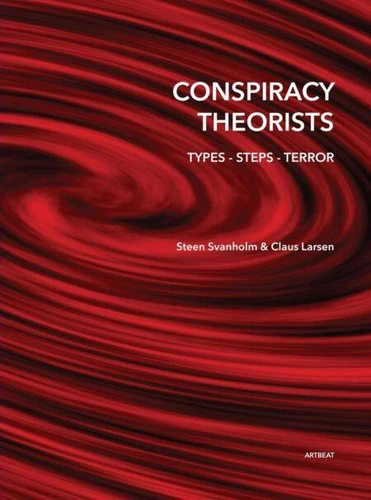Conspiracy theorists. Types - Steps - Terror
Par :Formats :
Disponible dans votre compte client Decitre ou Furet du Nord dès validation de votre commande. Le format ePub est :
- Compatible avec une lecture sur My Vivlio (smartphone, tablette, ordinateur)
- Compatible avec une lecture sur liseuses Vivlio
- Pour les liseuses autres que Vivlio, vous devez utiliser le logiciel Adobe Digital Edition. Non compatible avec la lecture sur les liseuses Kindle, Remarkable et Sony
 , qui est-ce ?
, qui est-ce ?Notre partenaire de plateforme de lecture numérique où vous retrouverez l'ensemble de vos ebooks gratuitement
Pour en savoir plus sur nos ebooks, consultez notre aide en ligne ici
- Nombre de pages115
- FormatePub
- ISBN978-87-409-8389-0
- EAN9788740983890
- Date de parution04/08/2025
- Protection num.Digital Watermarking
- Taille3 Mo
- Infos supplémentairesepub
- ÉditeurSaxo Publish
Résumé
Why do people become conspiracy theorists? Why are conspiracy theorists so frustrating to talk to? Why do conspiracy theorists exhibit so extreme behavior?
These questions will be answered in this book as well as the reasons why the prevailing initiatives are ineffective.
It is a false assumption that there is only one type of conspiracy theorist and that he is receptive to common sense, dialogue, evidence, and that he is generally prepared to participate in an open, democratic society on equal footing with everyone else.
Nothing points to the fact that conspiracy theorists in general can be influenced.
The authors argue that there are three types instead of one: The Novice, the Preacher, and the Warrior.
Each type exhibits different behavior and responds differently when approached by commonly accepted methods. The authors present a structured approach for these groups of citizens, such as two simple five-step models for analysis and handling of the methods of the conspiracy theorists. The models can be applied by everyone and also work outside the world of conspiracy theorists.
Each type exhibits different behavior and responds differently when approached by commonly accepted methods. The authors present a structured approach for these groups of citizens, such as two simple five-step models for analysis and handling of the methods of the conspiracy theorists. The models can be applied by everyone and also work outside the world of conspiracy theorists.
Why do people become conspiracy theorists? Why are conspiracy theorists so frustrating to talk to? Why do conspiracy theorists exhibit so extreme behavior?
These questions will be answered in this book as well as the reasons why the prevailing initiatives are ineffective.
It is a false assumption that there is only one type of conspiracy theorist and that he is receptive to common sense, dialogue, evidence, and that he is generally prepared to participate in an open, democratic society on equal footing with everyone else.
Nothing points to the fact that conspiracy theorists in general can be influenced.
The authors argue that there are three types instead of one: The Novice, the Preacher, and the Warrior.
Each type exhibits different behavior and responds differently when approached by commonly accepted methods. The authors present a structured approach for these groups of citizens, such as two simple five-step models for analysis and handling of the methods of the conspiracy theorists. The models can be applied by everyone and also work outside the world of conspiracy theorists.
Each type exhibits different behavior and responds differently when approached by commonly accepted methods. The authors present a structured approach for these groups of citizens, such as two simple five-step models for analysis and handling of the methods of the conspiracy theorists. The models can be applied by everyone and also work outside the world of conspiracy theorists.



